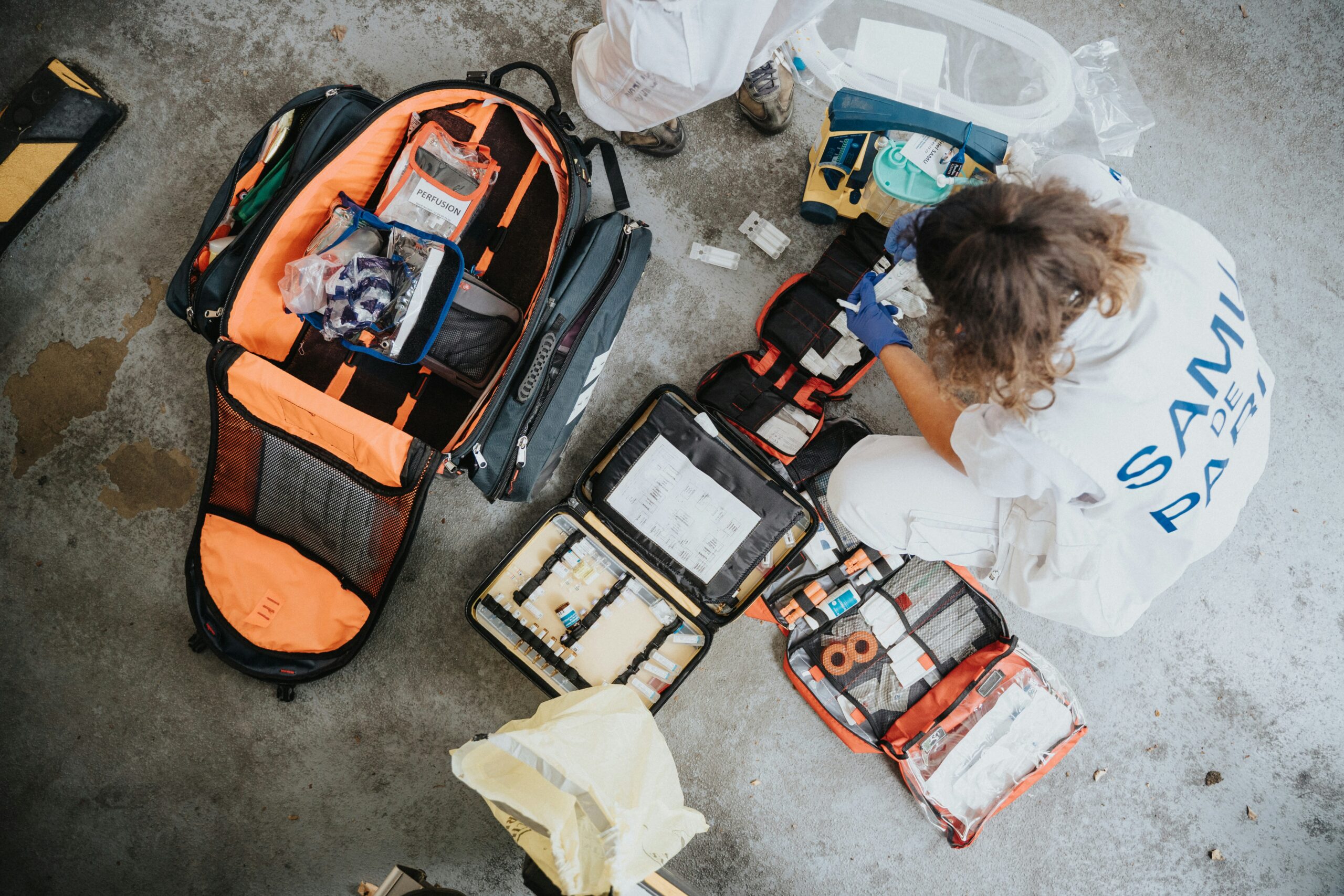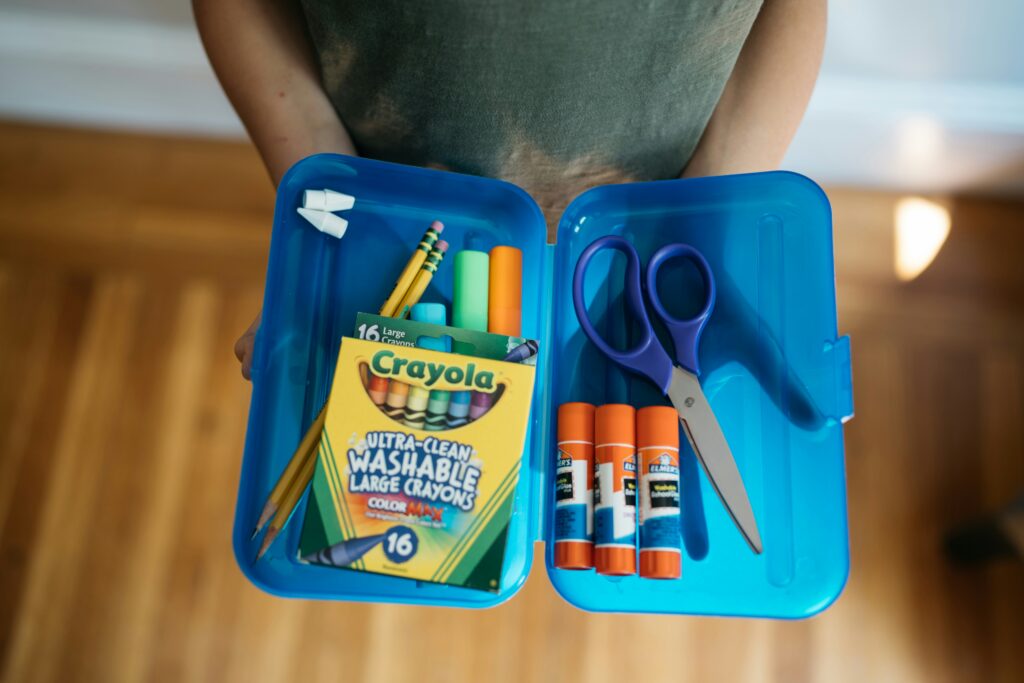Your cart is currently empty!

How to Create a Family Emergency Plan for National Preparedness Month
Emergencies are rarely convenient. They rarely come with a warning. Whether it’s a power outage, wildfire, house fire, or major storm, having a plan in place can turn chaos into calm. That’s why September is National Preparedness Month. A reminder to pause, think ahead, and make sure your family is ready for whatever may come.
The good news? You don’t need to panic or go overboard. Just a few simple steps can help you create a personalized family emergency plan that brings peace of mind all year long. In this post, we’ll walk you through how to create a plan that works for your household.
Why Every Family Needs an Emergency Plan
Emergencies don’t always make headlines, but they do happen every day. From severe storms and wildfires to house fires, flooding, or unexpected power outages, these situations can quickly become overwhelming if you’re not prepared.
Having a plan helps your family:
Stay calm under pressure.
Knowing what to do (and who’s doing what) can prevent panic and help everyone act quickly and safely.
Stay connected.
If your family gets separated, at work, school, or elsewhere, a communication plan helps you find each other fast.
Protect vulnerable family members.
Kids, older adults, and pets need extra support during emergencies. A clear plan helps you meet those needs without scrambling in the moment.
Feel more confident.
Even if you never need to use it (and hopefully you won’t!), just having a plan in place can reduce stress and help you feel more in control during uncertain times.
You don’t have to prepare for every possible emergency, but preparing for the most likely ones in your area is a powerful place to start.

Step 1: Create a Family Communication Plan
When something unexpected happens, communication is often the first thing to break down. Cell towers may be overloaded, power could be out, or family members might be in different places. That’s why it’s important to have a plan for how to reconnect, before you need it.
Choose an emergency contact.
Pick someone outside your immediate area (like a relative in another city) who everyone can check in with. During a major event, long-distance calls may go through more easily than local ones.
Share contact info.
Make sure each family member (who is old enough) has a list of important phone numbers written down. Not just stored in a phone. Include:
- Parents or guardians
- Emergency contact
- School/work numbers
- Doctor’s office
- Local emergency services (non-911)
Help kids memorize one phone number.
Even young children can learn to recite a parent’s phone number or the family emergency contact’s info with a little practice.
Keep a copy in your emergency kit.
Print or write your communication plan and include it in your emergency supply kit, your child’s backpack, or taped inside a cabinet.
When your family knows who to call and how to reach each other, everything else becomes just a little bit easier to handle.
Step 2: Know Your Exits and Safe Spots
In an emergency, every second counts, and the last thing you want is confusion about how to get out or where to go. That’s why one of the most important parts of your family emergency plan is knowing your exits and your safe zones.
Identify exits in every room.
Walk through your home and find two ways out of each room, if possible. This could be a door and a window, or two different hallways, depending on your layout.
Practice your home evacuation plan.
Make sure everyone knows how to leave the house quickly and safely. Have a designated meeting spot outside, like the mailbox, a neighbor’s driveway, or a tree in your yard.
Know where to shelter in place.
For storms or tornadoes, identify the safest spot inside your home, usually a windowless room or basement. For earthquakes, practice “drop, cover, and hold on.”
Post a basic home escape map.
Especially for younger kids, a visual guide near the fridge or family bulletin board can be a helpful reminder.
Even doing one walk-through and a short practice drill as a family can make a big difference in how prepared you feel.
Step 3: Build an Emergency Supply Kit
If you had to leave your home quickly or shelter in place for a few days, what would you need? An emergency supply kit helps ensure your family has the essentials on hand, even if help or access to stores is delayed.
Here’s what to include:
Basic Essentials (enough for 3 days minimum):
- Bottled water (1 gallon per person per day)
- Non-perishable food (granola bars, canned goods, baby formula, etc.)
- Manual can opener
- Flashlight and extra batteries
- Battery-powered or hand-crank radio
- First aid kit
- Phone charger or portable power bank
- Extra cash (ATMs may be down)
- Copies of important documents in a waterproof bag
- Medications and medical supplies
Personalize your kit:
- For kids: favorite snacks, a small toy or stuffed animal, and a coloring book
- For babies: diapers, wipes, formula, baby food
- For pets: food, leash, meds, carrier
- For anyone with specific health needs: glucose monitor, inhalers, etc.
Pro tip: Store your kit in a waterproof tote or backpack, and keep it in an easy-to-grab location like a hallway closet or by the front door.
An emergency kit isn’t about expecting the worst. It’s about being ready for the unexpected.
Step 4: Make a Plan for Every Scenario
Not all emergencies look the same, and your response shouldn’t either. Having a few basic plans in place for different situations can help you act quickly and safely without second-guessing yourself in the moment.
Here are some key scenarios to consider:
House Fire
- Practice how to get out fast. No stopping to grab things
- Have a meeting spot outside where everyone knows to go
- Remind kids never to hide in closets or under beds
Severe Weather (Storms, Tornadoes, Hurricanes)
- Know where to shelter inside your home (lowest, safest place)
- Keep your emergency kit nearby
- Stay away from windows and glass doors
Power Outage
- Use flashlights instead of candles
- Keep fridge/freezer doors closed as much as possible
- Have a backup plan for medication that needs refrigeration
Shelter-in-Place vs. Evacuation
- If told to shelter, stay indoors, and tune in to local updates
- If told to evacuate, know where you’ll go (friend’s house, hotel, shelter)
- Have a go-bag ready if evacuation is needed quickly
If You Get Separated
- Make sure everyone knows the emergency contact’s info
- Teach kids to go to a teacher, police officer, or trusted adult
- Use your communication plan to reconnect
You don’t need an elaborate plan for every disaster imaginable, but covering the most likely situations in your area can make all the difference.
Step 5: Review and Practice Regularly
Even the best emergency plan won’t help if no one remembers it. That’s why it’s so important to check in, update, and practice your plan regularly. Especially as your family grows or routines change.
Here’s how to keep it simple and consistent:
Review your plan every 6–12 months
- Update emergency contacts, medical info, or school details
- Replace expired food, batteries, and medications in your emergency kit
- Adjust for new family members (babies, pets, caregivers, etc.)
Make it part of family routines
Use dinner time, game night, or a weekend afternoon to talk through “what if” scenarios in a calm, non-scary way. Practice makes it feel normal. Not frightening.
Keep printed copies handy.
Place one on the fridge or inside a kitchen cabinet. Put a smaller version in your go-bag, car, or your child’s backpack. Don’t rely on phones alone, especially in power outages.
The more often you talk about your plan, the easier it is for everyone to remember it when it counts.
You don’t have to predict every emergency, but having a plan can turn fear into confidence and confusion into action. Just a few simple steps can help your family stay safe, connected, and ready for whatever life throws your way.
Sign up for the Healthy American newsletter to get your free Family Emergency Plan Checklist, plus seasonal safety tips, wellness resources, and practical tools to protect what matters most, your peace of mind.

Leave a Reply